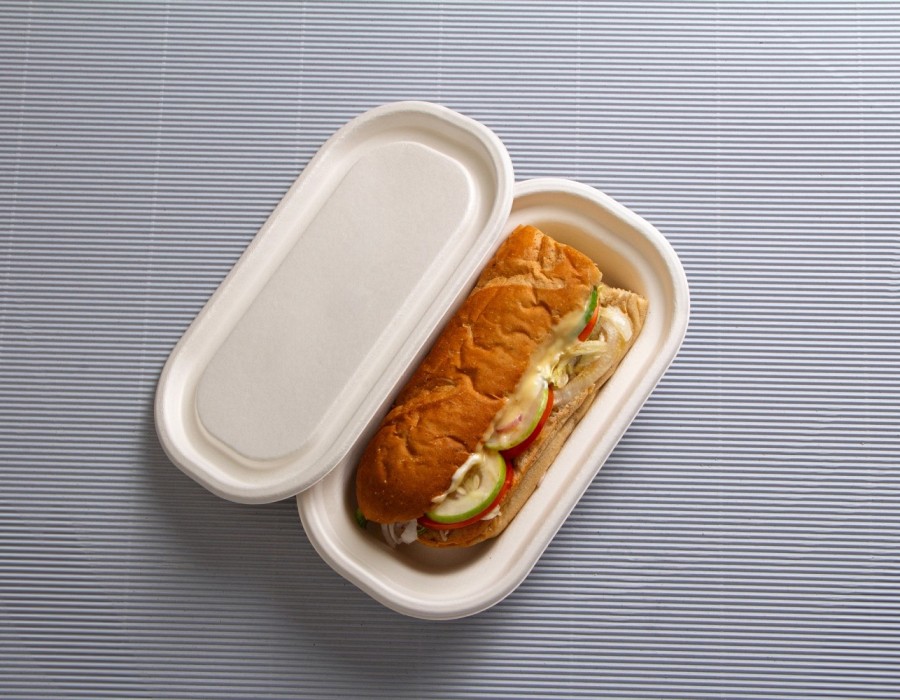Introduction
Ocean pollution has reached alarming levels, with an estimated 8 million tons of plastic entering the oceans each year. This pollution poses a severe threat to marine life and ecosystems, leading to detrimental effects on biodiversity, human health, and the global economy. One promising solution to combat this growing crisis is the use of bagasse containers—an eco-friendly alternative made from the fibrous residue of sugarcane. By choosing bagasse containers over traditional plastic, we can significantly reduce the amount of waste that ends up in our oceans, creating a healthier and more sustainable environment.
The Environmental Impact of Plastic Waste
Plastic waste is a major contributor to ocean pollution, with single-use plastics like straws, bottles, and containers making up a large portion of the debris found in marine environments. These plastics can take hundreds of years to decompose, breaking down into smaller microplastics that are ingested by marine animals, entering the food chain and ultimately impacting human health. The persistence of plastic in the oceans also leads to entanglement and ingestion by wildlife, causing injuries, starvation, and even death. The shift towards more sustainable alternatives, such as bagasse containers, is crucial in mitigating these harmful effects.
How Bagasse Containers Offer a Sustainable Solution
Bagasse containers, made from the leftover pulp of sugarcane after juice extraction, are a biodegradable and compostable alternative to plastic. Unlike plastic, bagasse containers break down naturally within a few months when exposed to the environment, leaving no harmful residues behind. This rapid decomposition process ensures that even if bagasse containers do end up in the oceans, they will not persist long enough to cause significant harm. By using a by-product of the sugarcane industry, bagasse containers also help reduce waste from agricultural processes, promoting a circular economy that values resource efficiency.
The Role of Bagasse Containers in Reducing Ocean Pollution
Switching to bagasse containers can have a direct impact on reducing ocean pollution. As more businesses and consumers adopt these eco-friendly alternatives, the demand for single-use plastics will decrease, leading to less plastic waste entering the oceans. Moreover, the use of bagasse containers supports sustainable waste management practices, such as composting and recycling, further reducing the potential for environmental contamination. By reducing the reliance on fossil fuel-based plastics, bagasse containers also contribute to lowering greenhouse gas emissions, addressing the broader issue of climate change that affects ocean health.
Encouraging Widespread Adoption of Bagasse Containers
For bagasse containers to make a significant impact on reducing ocean pollution, widespread adoption is essential. Governments, businesses, and consumers all have a role to play in promoting the use of sustainable packaging options. Policies that ban or limit single-use plastics, incentives for businesses to switch to eco-friendly alternatives, and increased consumer awareness about the environmental impact of their choices can drive the adoption of bagasse containers. Education and awareness campaigns can also highlight the benefits of bagasse containers, encouraging individuals and organizations to make environmentally responsible decisions.
Conclusion: A Step Towards Cleaner Oceans
Bagasse containers represent a viable and sustainable solution to the growing problem of ocean pollution. By choosing biodegradable and compostable alternatives to plastic, we can significantly reduce the amount of waste that ends up in our oceans, protecting marine life and ecosystems. The adoption of bagasse containers is a critical step towards achieving a cleaner, healthier planet. Through collective action and commitment to sustainability, we can pave the way for a future where ocean pollution is a thing of the past, ensuring that our oceans remain vibrant and full of life for generations to come.





Comments